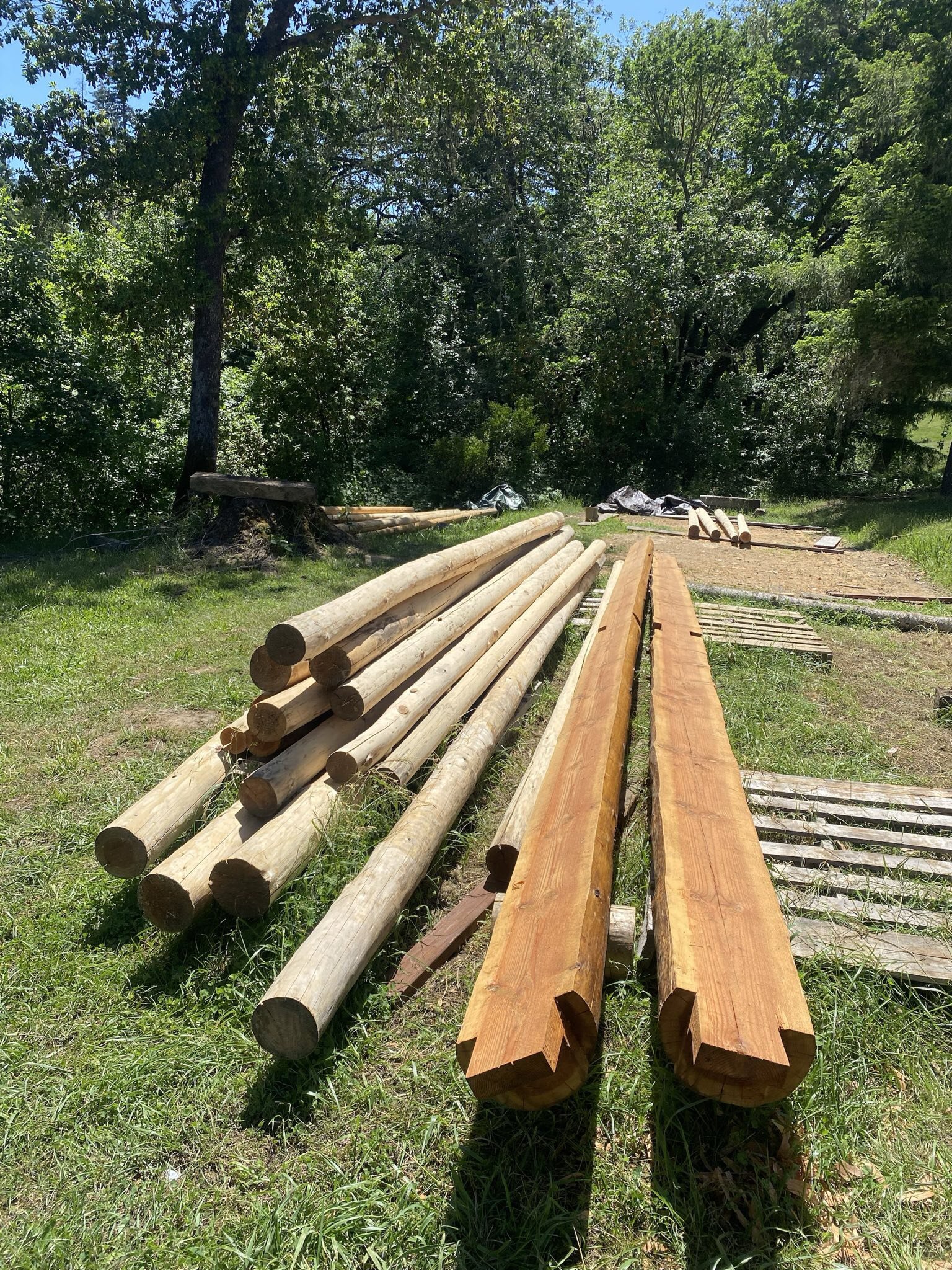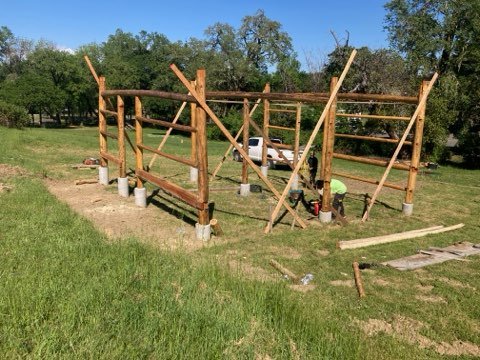When we take care of the forest, the forest takes care of us.
Old growth stand at Chamberlin Creek, Mendocino County, CA
Old growth stand at Chamberlin Creek, Mendocino County, CA




To increase the scope and impact of the business development we are undergoing as part of the NCRP Woody Feedstock Aggregation Pilot Project it has become clear that we need more funding to supplement this grant. Our intent is to popularize small diameter poles and natural building as an affordable alternative to conventional building materials. We want to empower rural communities to work on the health of their forests while providing a supplemental income in value added products. Integrated into the narrative about reuse, deconstruction and upcycled wood, we will continue to tell the story about why these materials are important to forest health.
By formalizing a system to access wood waste streams, we can create new markets and build networks around local utilization. As demand grows we are pivoting into brokering permitted wood directly to communities that can use them. For example, we plan to connect with rural underrepresented wood artists to commission a series of furniture integrating small diameter round poles, 5” and less, that we will provide. To raise awareness, these pieces could be shown at local venues and galleries for sale. Forest health work is supplanting the cannabis and logging industry in the areas we are focusing on, positive alternatives to extractive industries are needed in order to ensure long term sustainability of jobs and revenues.
This season we are contemplating and reflecting on regenerative spatial practices. Can architecture(s) support multispecies conviviality and contribute to cultivation of ecological futures?
See our YouTube video on how our group aims to solve multiple problems related to dense overgrown forests.
“Want to limit carbon and curb wildfire? Create a market for small trees”
(Article about ongoing UC Berkeley Research Efforts)
FRG’s first Ecology Hour radio show aired on KZYX-FM on July 16th, 2024
Listen to Sarah Reith’s piece: What Can Be Done With Forest Residues?
Govinda Dalton, Jenny Burnstad and Gray Shaw talk about current projects.

There is widespread science based agreement among native land management practitioners, watershed & forest ecologists, and sustainable forestry professionals, about the need for renewed stewardship practices in the tragic wake of clear cut harvesting of forest lands and the loss of ancient traditional low intensity fire management. The overburden of fire fuel loads has been steadily increasing and understory regeneration has largely gone unchecked. A high density of Douglas fir stands are the predominant first succession species form clear cuts. Over competition for light, water, space, and nutrients as has lead to weakened forests, loss of diversity, and abundant small and dead wood.
Today’s wildfires are ascending into devastating crown and canopy fires, taking down the taller mother trees. Prior to European colonization of the Americas, indigenous peoples tended the forestland of California in many ways including the use of low intensity controlled burns. “These controlled fires were part of the environmental cycles and maintenance of wildlife habitats that sustained the people's cultures and economies. What was initially perceived by colonists as ‘untouched, pristine’ wilderness in North America, was actually the cumulative result of these occasional, managed fires creating an intentional mosaic of grasslands and forests across North America, sustained and managed by the original Peoples of the landbase.” (Native American use of fire in ecosystems, Wikipedia) The reintroduction of prescribed burns prevent overgrowth of the forest’s understory, allowing more water and nutrients for the healthy bigger trees, and fostering habitat for the species dependent upon fire to regenerate. Today’s catastrophic wildfires burn entire forests while diminishing California’s largest source of carbon sequestration, pumping massive amounts of carbon dioxide (CO2) into the atmosphere.

CCC with CalFire chipping small thinned trees.

These poles exceed the tensile strength of milled lumber, with uncut continuous fibers running their entire length. Encased in natural fire resistant clay based plasters, these structures have proven to be exceptionally impervious to wildfires and are in compliance with CalFire’s Urban Forestland Interface standards. This is a marked advance from lower quality, loose ringed stick lumber that has been sourced through extractive methods, and too often combined with toxic and highly flammable materials we see in the mainstream dwellings.
FRG’s forest stewardship standards are guided by traditional Indigenous practices and restoration standards to improve forest structure and watershed health, to regain canopy integrity…
98% of California forestland (nearly 50% of which is privately owned) is recovering from clear-cut forestry, which is still legal on private lands and widely practiced. Much of that forestland is…
The most efficient, sustainable and intelligent solution for today’s housing needs is the use of small diameter poles, that are selectively thinned to restore forestlands. Small poles are abundant and…
Small poles have been used as the framework for housing and shelter for millennia in forested areas around the world. In the early years of California’s milled lumber industry, sourced from old…
“I was drawn to the event because it’s a way of making healthier forests, safer conditions for all of us, and there’s a potential for low-cost housing materials we have available here,” Third District Supervisor, John Haschak said. He added that he wants to develop low-income and senior housing and likes the ideas presented by the Forest Reciprocity Group. Continue reading…
FRG is an initiative of Cloud Forest Institute, whose mission is to encourage bio-regional endeavors to re-establish balance within ecological systems by way of environmental education, forest reciprocity and resilient community development. FRG was created through the efforts of members of Cloud Forest Institute, Polecraft Solutions and a growing number of concerned individuals.
The North Coast Resource Partnership (NCRP)’s Woody Feedstock Aggregation Pilot Project is funded under the Governor’s Office of Planning and Research (OPR)’s state-wide Woody Feedstock Aggregation Pilot Projects. This initiative is part of the broader North Coast Resilience Plan: Fire Resilient Forests Strategy that the NCRP developed in collaboration with a wide range of regional partners and local experts. The Watershed Research and Training Center (WRTC) serves as the lead partner to work with and advise the subregions to create a business plan to implement.
Financial support has been granted through the Rose Foundation for Communities and the Environment and the Just and Resilient Future Fund of the Another World is Possible Coalition. Further generous support is given by METTA, a global community dedicated to awakening together, whose vision is for the benefits of relational Dhamma to be shared and made available for the world.